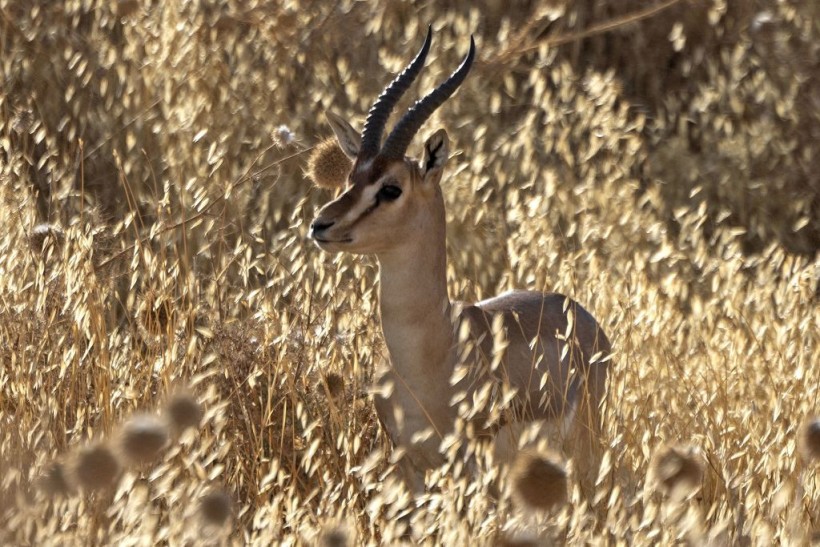The probability of forest fires in the European environment is growing as the weather shifts. Pasture of huge antelopes can be an inexpensive strategy to reduce dangers. This has been highlighted by specialists in the backdrop of the current spate of flames in southern as well as central Europe.
Protection for Wildlife Species in Europe
The prevailing encroachment of the terrain, along with continuous global warming favoring harsher as well as hot temperatures, is a deadly mix. Because to the extended dryness and rising supplies of combustibility in the shape of dry plants, the environment has become combustible, as per BBC news.
As comments by Miloslav Jirk of the Czech Academy of Sciences' Biology Centre, massive ungulate pasture is a particularly excellent method for eliminating foliage that allows flames to progress fast. It may be regions with old, open fields or plants.
Eurasian beavers, grey seals, grey wolves, as well as European bison have experienced arguably of the most robust population and regional distribution recovery.
The research, funded by the environmental organization Rewilding Europe, examined 50 European animals. While the Zoological Society of London, BirdLife International, and the European Bird Census Council collaborated to create it.
On the other hand, the European Wildlife Comeback Report 2022 expands on previous findings from 2013. It focuses primarily on animals that have recovered in the last approximately four to five decades.
Frans Schepers, Executive Director of Rewilding Europe argues that this recent research puts the spotlight not simply on which European life forms are rebounding effectively, yet also on why they are recuperating well.
In the report posted by Asiana Times, by understanding from great achievements, researchers may further maximize nature conservation rebound throughout the spectrum, yet the research equally illustrates that researchers should strive incredibly arduous on several sides of the line to maintain the process going and enable other species to personally profit from it.
In accordance with the research, grey wolves are considered one of the best successful projects. They were widespread in most parts of Europe by the end of the 18th century, but their numbers declined as sentient numbers increase.
Based on the research, they nowadays have reconquered numerous locations in Europe, where populations surged by approximately 1,800% between 1965 and 2016. Several Scandinavian governments have already permitted wolf culls in rural areas to safeguard cattle.
Also read: World's Most Powerful Storms: Which Hurricane Caused the Most Damage?
Wildlife Protection Efforts
Barnacle geese, griffon vultures, great white egrets, as well as Dalmatian pelicans are likewise making good recoveries. Conducted as part Europe attributes these gains to legislative safeguards provided by the EU Birds and Habitats Directives, as well as modifications in legislation and agricultural management.
It's not like every creature examined was on the upswing. According to the paper, the spotted seal's existence is difficult to predict since its reproductive environment has severely deteriorated owing to diminishing ice cover, the Headtopics noted.
Sophie Ledger of ZSL's Institute of Zoology, the study's main researcher, expressed optimism about the discoveries. The research provides grounds for confidence, demonstrating that if granted with the opportunity and well-targeted preservation initiatives, animals may rebound.
Grazing may potentially help to minimize wildfires from reoccurring in certain formerly burnt regions. Burned regions soon get overrun with broad vegetation types, whose dry covering are considered to be very combustible and are frequently the places where major fires occur.
Massive gazelles might mitigate these dangers since they eat grassland types that cattle, for instance, cannot manage. Moreover, according to news media site, Zero Coverage, massive gazelles like bison, wild horses, as well as back-bred aurochs could effectively deter fires, particularly in natural forests, wildlife sanctuaries, or even designated terrain regions, but in previous and current combat locations.
Bison have long resided in Poland's strongest military region, Drawsko in Western Pomerania, which NATO soldiers frequently utilize for practice sessions.
Related article: Shoebert the Seal Takes Residence at Freshwater Pond in Beverly City
© 2024 NatureWorldNews.com All rights reserved. Do not reproduce without permission.


![Climate Change is Reducing Dust Levels Worldwide as Arctic Temperature Warms [Study]](https://1471793142.rsc.cdn77.org/data/thumbs/full/70320/280/157/50/40/climate-change-is-reducing-dust-levels-worldwide-as-arctic-temperature-warms-study.jpg)
![Tsunami Hazard Zones: New US Map Shows Places at Risk of Flooding and Tsunamis Amid Rising Sea Levels [NOAA]](https://1471793142.rsc.cdn77.org/data/thumbs/full/70325/280/157/50/40/tsunami-hazard-zones-new-us-map-shows-places-at-risk-of-flooding-and-tsunamis-amid-rising-sea-levels-noaa.jpg)


